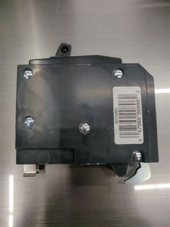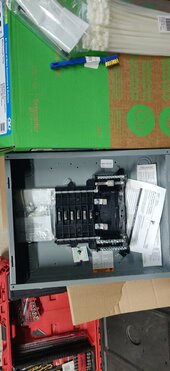I ordered 2 60A.
I know I'm breaking the rules but I'm a rebel at times.
You'll have to try harder.
PV Aggregator panel is allowed, 2x 60A breakers on a 125A busbar. Sum of breakers (not counting main or OCP feeding the panel) doesn't exceed busbar rating.
If 100A or 125A breaker feeding PV aggregator, this 200A busbar panel would be in compliance with up to 100A or 75A of additional breakers (per pole.)
Of course, installed at far end of bus, L1 & L2 can't experience excessive current.
N can, however. So don't exceed 200A of single phase loads on either leg (or less, if wires feeding panel have lower ampacity.)
I'm doing it this way so it's isolated from the grid and easy to pull down and relocate when I move. I can put the house back to original in an hour if needed.
The thought crossed my mind today to build the whole thing on strut and casters...
And hard wired into main panel?
I picked up a 60A 120/240V welder cord + outlet (not cheap!)
I'm using that to power a sub panel for my lab/workshop (conversion of old bedroom involved installing a single outlet.)
But only enough amperage for one of your inverters, not both.
You could install 2x 60A outlets in your main panel and plug in two inverters with separate power cords.





